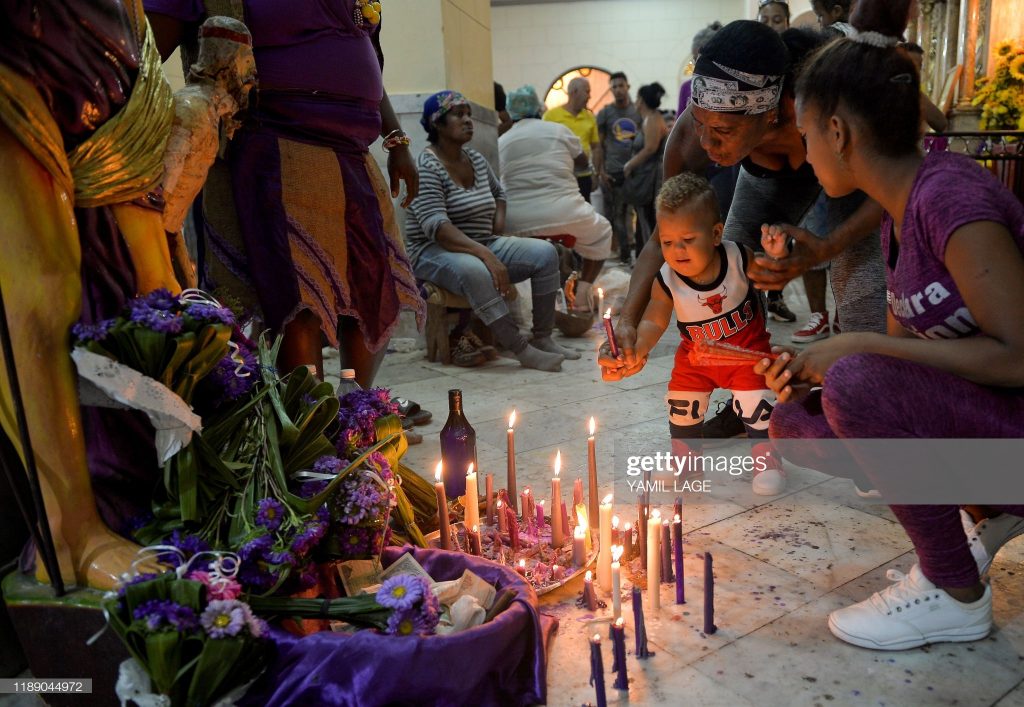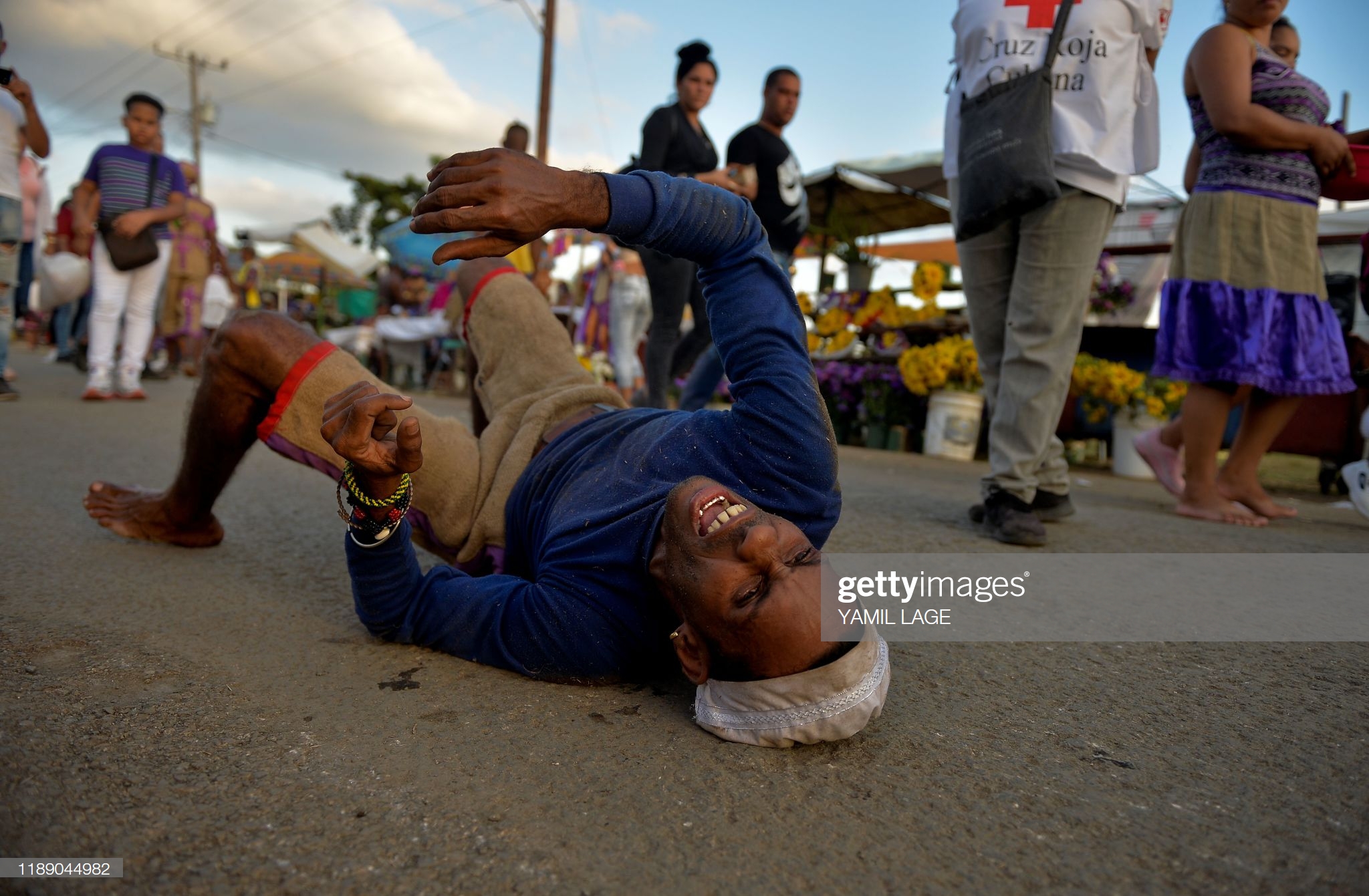News Americas, NEW YORK, NY., Weds. Dec. 18, 2019: Ever heard of the celebration of Saint Lazarus?
At least one Caribbean nation celebrates this day every December. On Dec. 16th, Cuban pilgrims marked the celebration in Havana.
Many took part in the Saint Lazarus procession at El Rincon Church, home to a leprosarium and a church dedicated to Saint Lazarus, where believers gather every year on this date, in this church to fulfill promises to Saint Lazarus – for Christians – or Babalu Aye, for the faithful of the Afro-Cuban religion.
The annual pilgrimage brings worshippers from all over the island to a small church in El Rincon, a town 17 kilometres (10.5 miles) south of Havana, the country’s capital city.
Saint Lazarus is the patron saint of lepers, and every year scores of pilgrims make their way to the shrine, a religious rite melding Catholic religion with Afro-Caribbean traditions.
The blend of Santeria and Catholic beliefs is the foundation for people who pay homage to Babalu Aye, the Santeria deity with healing powers, also known as San Lazaro or Saint Lazarus amongst the faithful.
Many pilgrims who come to the church are sick, they crawl or walk on their knees, some carry a cross or a block of concrete on their backs.
Little plaster statues of Saint Lazarus are sold outside the sanctuary and show a man in rags, with dogs licking the wounds on his legs.
According to the Smithsonian Mag, in the African-inspired religious tradition known as Santería or Oricha, Babalú-Ayé is both feared and beloved.
He is thought to be responsible for bringing epidemics like smallpox, leprosy and AIDS, Babalú-Ayé also cures these diseases. Oricha elders tell of his exile from his homeland with the Lucumí because he spread smallpox among them, and they tell of his journey to the Arará, who were healed by him and ultimately made him their king.
The elders teach that he is an irascible old man and so mysterious that his omnipotence is nearly impossible to comprehend. They also teach that everyone should always pray for health, and Babalú is one of the guarantors of this most important blessing.

In Cuban Catholicism, Lazarus, the patron saint of the poor and sick, is represented as a homeless beggar surrounded by dogs. Some say he was a fourth-century bishop, but most Cubans imagine him as the Biblical Lazarus – the poor man who cannot enter the kingdom of heaven, who Jesus raises from the dead. Cuba’s Lazarus works miracles for the destitute and the infirm, making him one of the country’s most popular saints.
Pilgrims often fill their carretillas with the offerings of flowers, candles and coins for alms. Sometimes they blow cigar smoke at the images of the saint—similar to an African-inspired tradition of blowing smoke onto an altar.
Some people dress in sackcloth and carry crutches. They walk jorobado—hunchbacked—just like Babalú-Ayé did when he was wandering the desolate places of the Earth. At his darkest moment, Babalú-Ayé was completely crippled and could not even walk. So urgent was his journey that he kept moving forward, dragging himself along the road toward his destination, or as the religious elders would say, his destiny.









